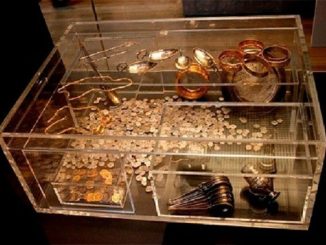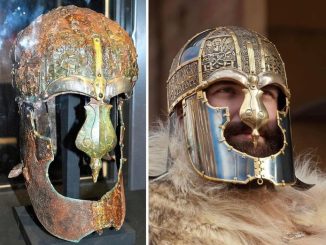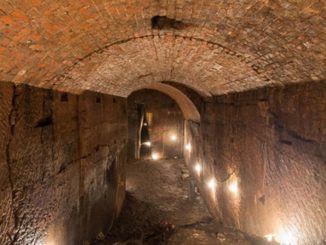In the ancient city of Ur, nestled in present-day Iraq, a single footprint immortalized in a mud brick offers us a captivating glimpse into a world more than four millennia old. Preserved through the ages, this accidental impression tells a poignant story of life around 2000 BC, inviting us to imagine the bustling activity that once thrived in the cradle of civilization.

The Ancient City of Ur
Ur was one of the most important cities of ancient Mesopotamia, situated in the fertile plains between the Tigris and Euphrates rivers. Known for its grandeur, the city served as a political, religious, and economic hub of the Sumerian civilization. The iconic Ziggurat of Ur, a massive step pyramid dedicated to the moon god Nanna, remains one of the best-preserved monuments of the era.
The Footprint on the Mud Brick
1. Context and Discovery:
- Location: The footprint was discovered in the ruins of Ur, specifically within a building believed to be part of a residential or administrative complex.
- Age: Dating back to around 2000 BC, the brick and its footprint originate from the era of the Third Dynasty of Ur.
- Material and Craftsmanship: The brick was made from clay and formed using traditional techniques. After being shaped and left to dry under the sun, it was intended to be used in the construction of a structure.
2. The Captured Moment:
- Barefoot Step: The footprint, left by someone stepping barefoot on the brick as it dried, provides a unique snapshot of a single moment in time.
- Possible Scenarios:
- It may have been made by a worker involved in the brick-making process.
- Alternatively, it could have been an unintentional imprint left by a child or passerby.
3. Historical and Cultural Insights:
- Daily Life in Ancient Ur:
- The footprint offers a glimpse into the daily lives of the people who built and inhabited this great city.
- It reminds us that, despite the grand monuments and complex society, ordinary individuals shaped Ur’s history.
- Brick-Making Practices:
- Sun-dried mud bricks were a common building material in Mesopotamia.
- The footprint reflects the ancient craftsmanship that went into constructing homes, temples, and administrative buildings.
- Social Hierarchies:
- The presence of footprints on construction materials can also hint at social structures, potentially revealing who was involved in labor activities.
The Legacy of Ur
Today, Ur is recognized as a UNESCO World Heritage Site and continues to draw the interest of archaeologists and historians. The footprint, along with other artifacts, enriches our understanding of this ancient civilization:
- Architectural Brilliance:
- The city’s structures, including the Great Ziggurat and royal tombs, highlight the architectural prowess of the Sumerians.
- Economic and Cultural Significance:
- Ur was a vital trading hub, exporting wool, textiles, and agricultural products across Mesopotamia and beyond.
- Religious Importance:
- The Ziggurat of Ur was the center of worship for Nanna, the moon god, and attracted pilgrims from across the region.
Conclusion
The footprint captured on a mud brick in Ur offers a timeless window into the daily life of ancient Mesopotamia. Inadvertently preserved through the ages, it serves as a poignant reminder of the people who once walked these ancient streets, contributing to the rich tapestry of human history. Through this simple yet profound impression, we are transported back over 4,000 years, marveling at the ingenuity and humanity of those who shaped one of the world’s earliest cities.


